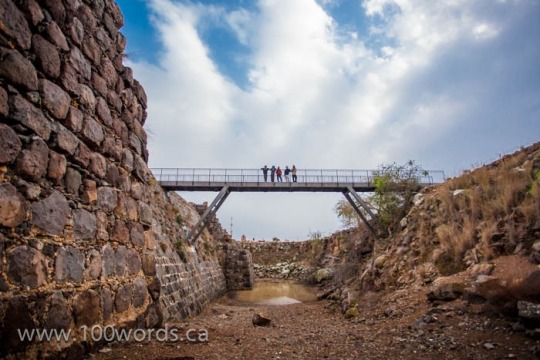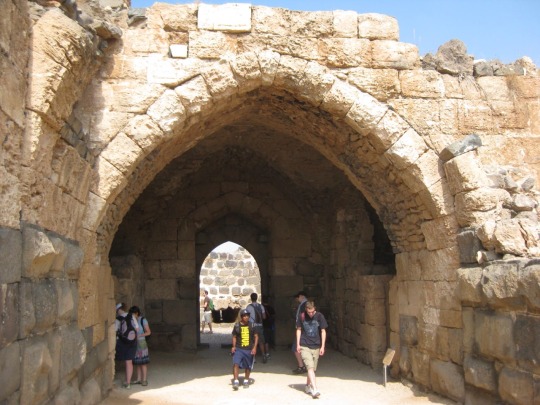#belvoirfortress
Explore tagged Tumblr posts
Photo

Spectacular #crusaderfort where the kids spent hours playing Hide ‘N Seek. #hideandseek #belvoirfortress #israel (at Belvoir Fortress) https://www.instagram.com/p/BsiKvXMHCxc/?utm_source=ig_tumblr_share&igshid=1bm4eb67exhgh
0 notes
Photo

The moat around the Belvoir fortress.
0 notes
Photo

Spectacular #crusaderfort where the kids spent hours playing Hide ‘N Seek. The group pictures show the Israel / Jordan border in the background. #hideandseek #belvoirfortress #israel (at Belvoir Fortress) https://www.instagram.com/p/BsiJ0k_H6ZH/?utm_source=ig_tumblr_share&igshid=1m08kc1pw4kkp
0 notes
Photo

Tourists roaming around the castle.
0 notes
Photo

Ruins of the Belvoir castle/ fortress.
0 notes
Photo

Understanding the Belvoir castle. This map provides you guidance on were everything is within the castle. Hope it helps.
0 notes
Link
Take a quick minute and look at this website! It has many beautiful images of the Belvoir Castle/ Fortress. It has images from all over the castle, from the courtyard, the main gate(s), the kitchen and many more.
0 notes
Text
The Crusader fortress of Belvoir, located on a hill of eastern lower Galilee, 20 km south of the Sea of Galilee and about 550 meters above the Jordan Valley. In Hebrew it is known as Kohav Hayarden, meaning – Star of the Jordan which preserves the name of Kohav – a Jewish village which existed nearby during the Roman and Byzantine periods. The Muslims called it Kaukab al-Hawa meaning “Star of the Winds” — representing the strong winds on this hill top.
0 notes
Text
Belvoir architecture
The Belvoir Castle is built mostly from the same black basalt upon which it stands, with limestone employed as freestone as well as for much of the inner and upper parts of the inner ward. It consists of two almost square enceintes, one inside the other, both defended by projecting rectangular towers.
The outer enceinte (100×110 m) is surrounded on three sides by a rock-cut ditch, 20–25 m wide and 12 m deep, from the bottom of which the walls rise on a battered base.
The east side, however, was protected by the natural scarp and by a projecting barbican, roughly 30 m square and probably no more than two storey high, which commanded the otherwise dead ground below and contained the main entrance.
The principal route into the castle led from an outer gate at the foot of the south-eastern tower, up a ramp and into the barbican, before doubling back and up again to reach an inner gate next to the same corner tower.
The inner gate is 2.35 m wide and was closed by a pair of wing-doors, defended above by a slit-machicolation between two pointed arches and from either side by enfilading embrasures.
A secondary gate, more conveniently sited for peacetime use but easily decommissioned in time of war, lay on the west of the castle and was probably reached across a level timber bridge spanning the ditch.
The outer walls would originally have stood some 12–16 m high (or 25 m within the ditch) and 3 m thick, but the destruction has left no more than 3 m standing. From their outer face, at the angles and mid-way along the sides, massive rectangular towers project; the three towers at the south-west contained staircases leading down to narrow posterns concealed in the angles where they met the curtain wall.
The inner face of the wall was lined with a continuous barrel vault, 8 m wide internally, which, besides providing covered accommodation for the personnel, stores, stables, smithies and other services of the castle’s outer ward, in wartime would have also given protection to those firing from the embrasures in the outer wall and created another tier of defence on the terrace above.
Enclosed by the outer enceinte, like a castle within a castle, stood the inner ward, some 50 m square with a tower 10 m square projecting at each corner. The inner ward had two entrances, a small postern on the east and a wider gate on the west, to which was later added a projecting rectangular gate-tower with an outer gate set in its southern flank, forming a bent entrance.
Both gates in the gate-tower have slit-machicolations above them; but while the outer one is set between two pointed arches, the inner one is placed behind a flat arch with decorative joggled voussoirs of a type probably derived from contemporary Islamic architecture. There is also a postern in the north wall of the gate-tower.
In the centre of the inner ward, a courtyard some 22 m square is enclosed by barrel-vaulted ranges. The undercrofts seem to have contained stores, stables and, on the south-east, a kitchen, while the living area of the knights seems to have been on the floor above, with access by a stone staircase on the south side of the courtyard.
On this piano nobile were to be found the chapel above the western gate and probably the dormitory and refectory; but all that remains of these more finely built apartments are some fragments of corbels, capitals, pilasters and sculpture, including the head of a youth and an unfinished flying angel (both Jerusalem, Rockefeller Mus).
Information provided by: everycastle.com
0 notes
Link
Check out this website, it provides Facts of the castle, historical context and it also describes the architecture of the castle!!
0 notes
Link
A website providing information not only about the Belvoir castle, but also other parks/ attraction near the Belvoir caste. Take a look at it if your planning to travel out of the country or just to learn.
0 notes
Photo

The Plan of the castle.
0 notes
Link
This website provides you with information about the Belvoir Castle. It gives some information about the archaeology of the fortress.
1 note
·
View note
Video
youtube
A man and women's experience at the Belvoir Castle.
0 notes
Photo

An Aerial photograph of the Belvoir Castle.
0 notes
Text
Brief History of The Fortress/ Castle.
The Belvoir castle, is well known for being a Crusader castle. The castle was built by the Knights Hospitaller during 1168, but it was never occupied until 1219. Prior to selling it the castle was part of the feudal estate of a French nobleman named Velos; in 1168 Velos then decided to sell it to the order of the Hospitallers. The fortress of the Belvoir castle then serves as a huge obstacle for the Muslims to try and invade on the Crusader Kingdom of Jerusalem. During the 1180, the castle withstood an attack from Muslim forces and later during 1182, the battle of Belvoir castle was fought near by. The fight was between King Baldwin IV and Saladin. After Saladin’s victory over the Crusaders at the battle of the Horns of Hittin, the Belvoir castle was besieged. The siege lasted just about a year and a half, until the defenders surrendered on January 5, 1189. Then on after, a Arabic governor occupied it during 1219. In 1241 Belvoir was ceded to the Franks, who then kept controlled until 1263. When modern times came it was then used as an Arab village, the inhabitants were mainly people who fled from the civil war; any arabic building built there were then demolished by Israeli authorities between 1963 and 1968. The Belvoir castle is now used and known as a tourist attraction to visit.
0 notes